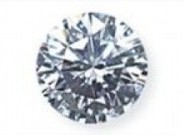When men and women really start looking into diamond grading, a common question is, “Why does the GIA color grade start with a D?”
Read More >>The Fancy Color Diamond Book: Facts and Secrets of Trading in Rarities is a 231-page hardcover that combines the imagery of a coffee-table book with facts about colored diamonds. The Fancy Color Diamond Book explores the range of fancy colors and discusses grading, clarity, and the role of fluorescence in determining value.
Read More >>Solitaire Setting
Solitaire Setting is a popular diamond engagement ring setting. The head secures the diamond. The prongs allow the diamond to catch the most light. A four-prong setting shows more of the diamond, but a six-prong setting is often more secure.
Read More >>Synthetic diamonds are grown in a laboratory and have essentially the same chemical composition and crystal structure as natural diamonds formed millions of years ago. In the last 30 years, gem quality synthetic diamonds have been grown in Japan, South Africa, Russia, Ukraine and the United States. Synthetic diamonds are generally produced using either High Pressure/High Temperature (HPHT) or Chemical Vapor Deposition (CVD).
Read More >>When you oooh and ahh over a sparkly diamond, to a large extent you’re reacting to its cut. What you want is light to enter through the crown table (the flat part at the top) and go to the pavilion (the pointy part at the bottom), where it reflects from one side to the other, and then back out of the diamond through the crown table. This ensures maximum sparkle and brilliance. Think spectacular laser show!
Read More >>

